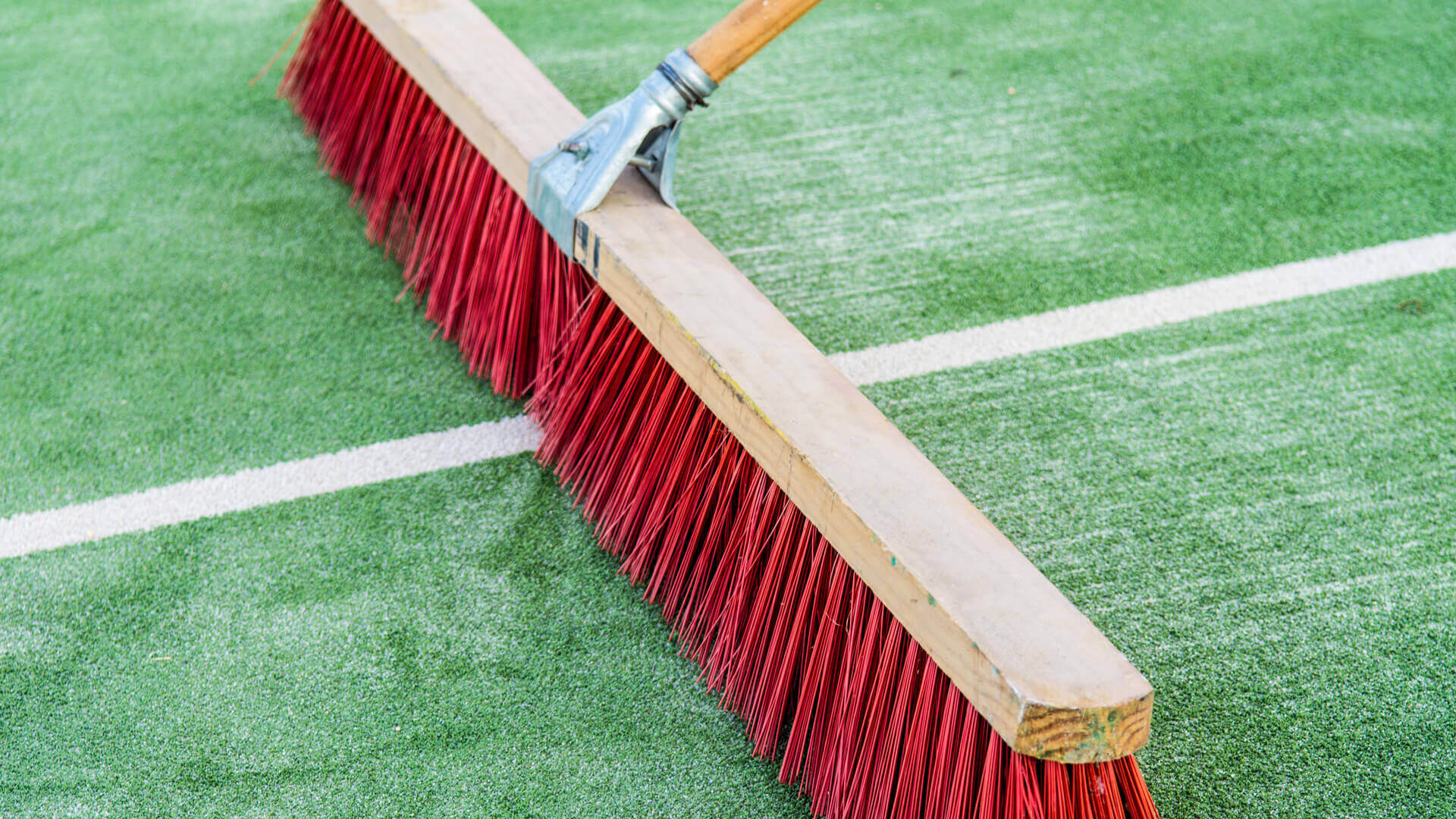When laying synthetic turf or artificial grass, you might wonder why you need to use sand in the process. Why does it have to be a specific type of sand? Wouldn’t any sand work? Surprisingly not all sand is the same. There are many different types of sand, each with its own ideal applications.
Silica sand is commonly used when laying artificial grass as it provides the turf with a more natural and plusher look. It’s clean, the perfect size and weight to hold the blades up and it’s a family-friendly product. Plus, it will lengthen the life of your synthetic lawn. Now if that’s not enough reason to use a synthetic turf sand during installation, we’ve listed 13 benefits for you below.
13 benefits of Synthetic Turf Sand
- Holds the grass in position
Using silica sand during the application of synthetic turf adds weight to the pieces of grass (sometimes referred to sections or strips). This helps to hold the grass in position and prevent it from being lifted or moved.
- Prevents against rippling
Due to the materials used to make artificial grass, it can expand under sun exposure and can contract during the cooler months. This movement, as subtle as it may be, can cause ripples, ridges and folds across the strips. Synthetic turf sand helps to ensure the grass stays flat against the ground.
- Protects the artificial fibres
The sizing of the sand particles means the sand will nestle in nicely around the grass blades and fibres. Combined with the weight of the sand, this helps to support the blades and keep them standing in a vertical position even when kids and pets are playing. Overall, the sand helps to provide your artificial grass with a natural 3D appearance.
- Increases fire resistance
It is very important that your synthetic turf is fire resilient for your peace of mind. Make sure to select a company that has its grass tested and certified fire resistant. So in the worst case when your barbeque is knocked over on the grass, you can be assured that there is a level of protection there. Adding silica sand during application will also provide another layer of protection and resistance against fire.
- Improves drainage
If you look closely there are drainage holes in the backing of the grass. These holes are there to help any rainfall drain away and not pool on top. When sand has been placed between the blades it acts as a filter which regulates the flow of rainwater, ensuring it all drains away. And there’s no need to worry, the sand won’t wash away with the rainwater.
- Keeps it cooler underfoot
During summer your synthetic turf can become too hot to touch, especially low quality grasses. Completing the application by using synthetic turf sand will help to reflect the sunlight, which in turn reduces the level of heat absorption the grass is doing. As a result this will make your artificial lawn cooler to touch and walk on.
- Increases security
We’ve already mentioned that having silica sand on your synthetic grass adds weight and this helps it to not move. This weight also helps to prevent theft, as the grass becomes heavier and harder to move. To successfully steal the artificial lawn, it would need to be cut into smaller strips which makes it useless. The sand will also blunt the knives being used to cut it, making it even more difficult to cut into smaller strips.
- Protects the backing
Synthetic turf sand is typically brushed onto the turf with a stiff broom or mechanical broom. This method of application enables the sand to fall to the bottom, at the base of the grass blades. When the sand rests on the latex backing it protects the backing from damage by pets. Dogs and cats sharp claws can easily slice through the backing, though over time they will get dulled by the sand. The sand can also protect the backing from damage caused by furniture.
- Prevents static
In the past artificial grass would build up static electricity. This was not great if you planned on using the area instead of just looking at it. No one wants to receive an electric shock, especially if you have children playing on the grass. Using sand helps to prevent build up of static electricity and makes the synthetic lawn safe for the whole family.
- Prevents weed from growing
On the rare occasion, airborne seeds can make a home in your artificial turf. Using synthetic turf sand during application can help to prevent weeds from growing. The sand is a naturally alkaline mixture of nutrient poor minerals that keeps weeds at bay without having to use chemicals. You can rest easy knowing you won’t be pulling out weeds when you use sand.
- You only see the grass
If you are worried about aesthetics, using synthetic turf sand improves the way your artificial grass looks and performs. The fine sand particles will rest at the bottom of the blades on the backing. Essentially hiding from view amongst the grass.
- It will prolong the life of your lawn
Using silica sand to complete the installation of your artificial lawn, will ensure the investment you have made into your lawn will last for years to come.
- Low maintenance
There is basically no maintenance required to upkeep your synthetic turf when it’s properly installed with sand. Enjoy your lawn free of mud and mess. And don’t worry about tracking sand everywhere, it will stay put amongst the blades.






